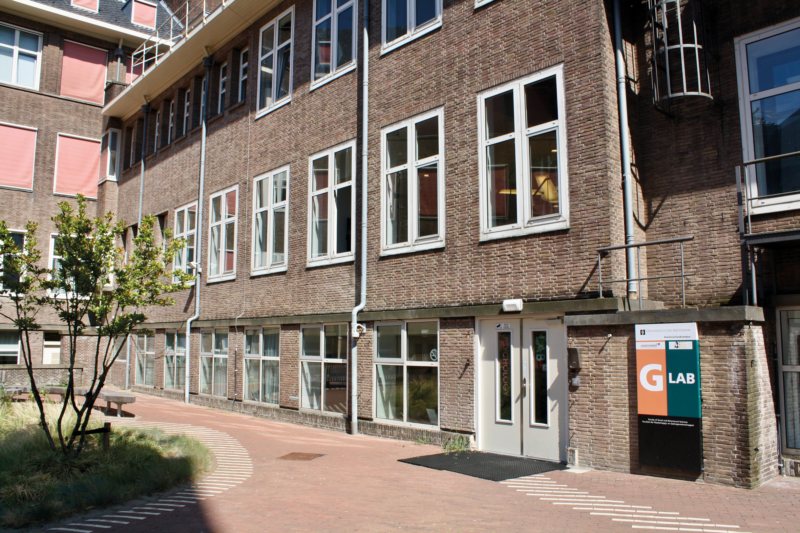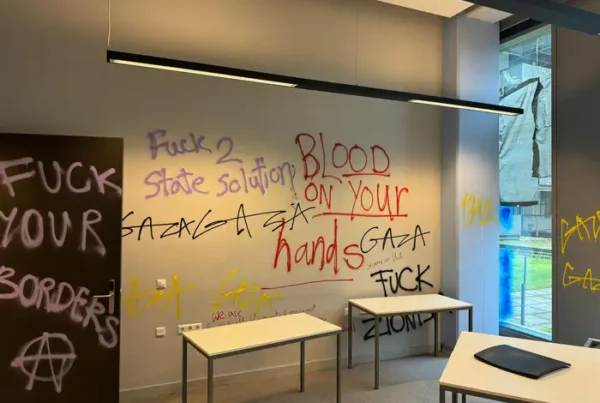

With the recent implementation of an international bachelor at the Psychology department (since 2018-2019), the topic of diversity has become more relevant at our department. This is a topic that is of great importance to our university in general, due to the sizable population of international students – about 5000 (“Facts and figures”, n.d.). The university has supported their interest in this topic by increasing their efforts towards making the university more inclusive.
The student councils of the Faculty of Social and Behavioral Sciences (FMG) and Faculty of Applied Social Sciences and Law (FMR), as well as FMG diversity officer, Marieke Brand, organized the Let me tell you project. This project started out as a creative way to form an ‘inclusive wall’, by hosting a competition that revolved around the cue of sharing stories. It was done with the aim of raising awareness of the diverse backgrounds of the people who use the buildings of the Roeterseiland campus. This is in hopes of fostering a sense of openness and an inclusive environment where we seek to learn and appreciate the rich and varied cultures that people at Roeterseiland bring with them.
As said at the opening of the exhibition, the exhibits are meant to share the stories of people who are underrepresented and capture the emotions expressed and experiences encountered. Walking along the first-level corridor of the ABC building, you get a glimpse into an excerpt of a person’s cultural experiences. There were two exhibits that stood out to me. The display by Brechtje Polman shared Didi’s experience with cultural shock and social anxiety when she moved from Shanghai (China) to Wageningen (The Netherlands). This story resonated with me as I could empathize with the difficulty in making sense of two cultures that are very much on opposite ends of a spectrum (conservative vs liberal). I have struggled with making sense of the Dutch and Singaporean cultures myself, from the age of nine.
The other piece that caught my attention was by Mercedes Mercedes-Mercedes which focused on the issue of losing touch with one’s roots when growing up in a culture dissimilar to one’s native culture. I think that the majority of third culture kids, children who grow up in a culture different from the one in which their parents grew up (“What Is a ‘Third-Culture Kid’?”, n.d.), spend a period of time feeling like they don’t belong to any culture, and some even hate their own native culture. The struggle is beautifully and succinctly captured in the story accompanying the display. There are several other pieces on display, and they are all worth a short walk and quick read along the corridor. The exhibit runs from February to July 2020, along the first-floor corridor of the ABC building.
If you are interested in getting involved with UvA’s diversity initiatives, you can also approach the Chief Diversity Officer team at https://uvadiversity.blog. They are UvA’s official committee for diversity. They oversee workshops, lunches and projects on raising awareness and create platforms for discussion and education on diversity at UvA. As with our theme on ‘Appearances’, while cliché, we shouldn’t judge a book by its cover, but instead, seek to read the stories it holds.
References
– Facts and figures. (n.d.). Retrieved on 4/2/20 from https://www.uva.nl/en/about-the-uva/about-the-university/facts-and-figures/facts-and-figures.html
– What Is a ‘Third-Culture Kid’?. (n.d.). Retrieved on 4/2/20 from https://www.merriam-webster.com/words-at-play/third-culture-kid

With the recent implementation of an international bachelor at the Psychology department (since 2018-2019), the topic of diversity has become more relevant at our department. This is a topic that is of great importance to our university in general, due to the sizable population of international students – about 5000 (“Facts and figures”, n.d.). The university has supported their interest in this topic by increasing their efforts towards making the university more inclusive.
The student councils of the Faculty of Social and Behavioral Sciences (FMG) and Faculty of Applied Social Sciences and Law (FMR), as well as FMG diversity officer, Marieke Brand, organized the Let me tell you project. This project started out as a creative way to form an ‘inclusive wall’, by hosting a competition that revolved around the cue of sharing stories. It was done with the aim of raising awareness of the diverse backgrounds of the people who use the buildings of the Roeterseiland campus. This is in hopes of fostering a sense of openness and an inclusive environment where we seek to learn and appreciate the rich and varied cultures that people at Roeterseiland bring with them.
As said at the opening of the exhibition, the exhibits are meant to share the stories of people who are underrepresented and capture the emotions expressed and experiences encountered. Walking along the first-level corridor of the ABC building, you get a glimpse into an excerpt of a person’s cultural experiences. There were two exhibits that stood out to me. The display by Brechtje Polman shared Didi’s experience with cultural shock and social anxiety when she moved from Shanghai (China) to Wageningen (The Netherlands). This story resonated with me as I could empathize with the difficulty in making sense of two cultures that are very much on opposite ends of a spectrum (conservative vs liberal). I have struggled with making sense of the Dutch and Singaporean cultures myself, from the age of nine.
The other piece that caught my attention was by Mercedes Mercedes-Mercedes which focused on the issue of losing touch with one’s roots when growing up in a culture dissimilar to one’s native culture. I think that the majority of third culture kids, children who grow up in a culture different from the one in which their parents grew up (“What Is a ‘Third-Culture Kid’?”, n.d.), spend a period of time feeling like they don’t belong to any culture, and some even hate their own native culture. The struggle is beautifully and succinctly captured in the story accompanying the display. There are several other pieces on display, and they are all worth a short walk and quick read along the corridor. The exhibit runs from February to July 2020, along the first-floor corridor of the ABC building.
If you are interested in getting involved with UvA’s diversity initiatives, you can also approach the Chief Diversity Officer team at https://uvadiversity.blog. They are UvA’s official committee for diversity. They oversee workshops, lunches and projects on raising awareness and create platforms for discussion and education on diversity at UvA. As with our theme on ‘Appearances’, while cliché, we shouldn’t judge a book by its cover, but instead, seek to read the stories it holds.



